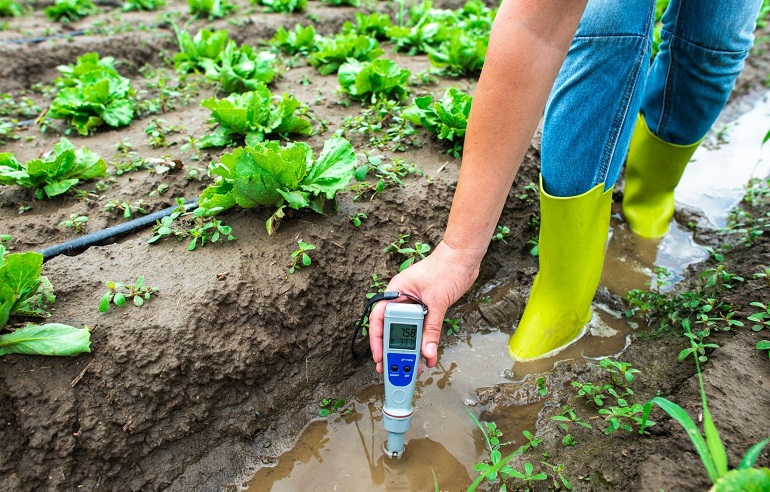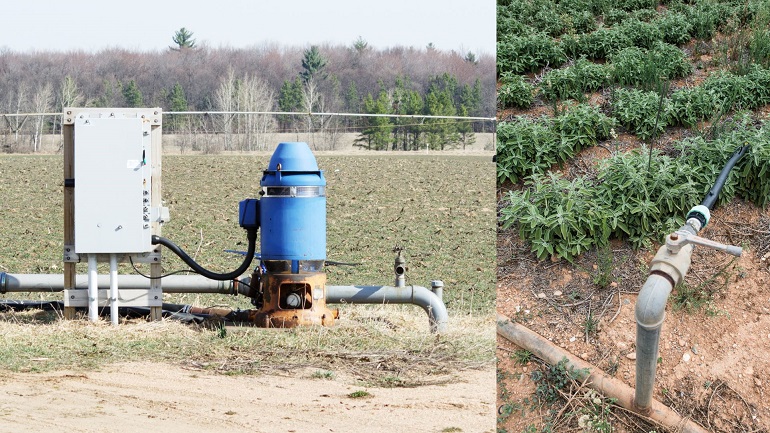Irrigation Management – How to Optimize Irrigation Efficiency

This post is also available in:
This post is also available in:
![]() Français (French)
Français (French) ![]() Deutsch (German)
Deutsch (German) ![]() Ελληνικά (Greek)
Ελληνικά (Greek)
All you need to know to improve your Irrigation System
Irrigation is an essential component of agriculture, landscaping, and horticulture. Irrigation management emphasizes the application of the right amount of water at the right time and in the right way based on plant needs with an overall goal of promoting plant growth and development while reducing water waste and costs.
Irrigation management is critical for optimizing the performance of irrigation systems, reducing water usage, and improving plant health. Although it could be challenging to optimize an irrigation system, understanding plants’ water needs, managing water pressure, and utilizing rain sensors are necessary. This way, farmers and landscapers can improve irrigation efficiency, conserve water resources, and save money/costs. Implementing these strategies may require an upfront cost, but the long-term benefits outweigh the investment. Therefore, adapting these strategies will not only make your irrigation system sustainable but will also protect the environment and promote a healthier future for farming and landscaping.
1. Understand Your Irrigation System – The parts of an irrigation system
Before optimizing your irrigation system, it is essential to understand how it works. An irrigation system comprises several components, including pipes, valves, sprinklers/emitters, and controllers. Understanding the function of these components is crucial for effective irrigation management.
a. Water supply: Water can come from various sources such as a well, a lake, a river, or municipal water. Understanding the quality and quantity of your water source is essential for effective irrigation management. Keep in mind that the water availability may be different in periods of high demand. It is common in many agricultural areas to apply a rotational use with farmers of specific fields to have access to water only for specific hours per day or every few days. To avoid any excessive drought stresses, it is essential to consider this and contact your local authorities in advance.

b. Pipes and fittings: Pipes and fittings are the conduits that transport water from the water source to the sprinklers. The size and material of your pipes and fittings affect the water pressure and flow rate, which is crucial for an efficient irrigation system.
c. Sprinklers/Emitters: Sprinklers/emitters are the devices that distribute water to plants. Several types of sprinklers and emitters are available, including rotor, spray, and drip. Using the correct/suitable type of sprinkler/emitter for your plants is essential for maximizing irrigation efficiency.
d. Valves: Valves control the flow of water in the irrigation system. There are two types of valves, manual and automatic. Automatic valves are more efficient as they can be programmed to turn on and off at specific times or according to soil moisture levels.
e. Controllers: Controllers are the brains of your irrigation system. They manage the irrigation schedule and turn on and off the valves. Controllers can be programmed to operate based on weather conditions, soil moisture levels, and plant water requirements.
2. Understand Your Soil and the Plants’ Water Needs
Plants require water to grow and stay vigorous. However, different plants have different water requirements depending on their species, age, and growth stage. The type, texture, and depth of the soil also affect water-holding capacity and drainage. Moreover, environmental factors such as temperature, humidity, and wind speed can affect plants’ water needs. Therefore, to avoid over-irrigation or under-irrigation, it is essential to monitor and adjust water application based on plant water requirements (Evapo-transpiration*Crop Coefficient).
a. Monitoring the soil moisture levels.
Soil moisture sensors can measure the amount of water content in the soil (at different depths and moments) and provide data on when to irrigate and how much water to apply. Generally, soil moisture may vary between soil saturation (relative soil moisture= 1, very wet) and wilting points (relative soil moisture=0, very dry). For instance, if the soil moisture level is too low, it indicates that the plant is under drought stress and requires water. On the other hand, if the soil moisture level is too high, it can cause root rot, reduce the oxygen content in the soil, and limit plant growth. On average soil, plants can grow satisfactorily when the relative soil moisture is around 0.54.
b. Choosing the right plants for your garden/farm
Native plants are better adapted to the local climate and soil conditions, making managing their needs relatively easier than exotic species. Choosing drought-tolerant plants is also a good way to reduce water usage. This is especially important in arid crops and fields.
Therefore, by understanding soils and the water needs of plants, farmers, and landscapers can adjust irrigation schedules to apply the right amount of water at the right time, leading to better plant growth, yield, and quality.

3. Managing Water Pressure
Water pressure is the force that pushes water through pipes and sprinklers/emitters. Too little or too much water pressure can affect the distribution of water and the effectiveness of irrigation, resulting in system damage on the extreme. Therefore, it is crucial to managing water pressure to optimize irrigation efficiency.
a. Installing pressure regulators on the irrigation system
Pressure regulators can reduce water waste, prevent leaks, and prolong the life of the irrigation system. Pressure regulators adjust the water pressure to a specific level, ensuring that each sprinkler/emitter head operates at a consistent rate for even water distribution.
b. Sizing pipes appropriately
Using large pipes can increase the water flow rate but also lead to water waste and higher energy costs. Conversely, using small pipes can restrict water flow and affect the performance of sprinklers. Therefore, it is crucial to size pipes based on the size of the irrigation system, the available water pressure, and the flow rate of each sprinkler.
4. Utilizing Technology to improve irrigation efficiency
Technology has revolutionized irrigation management, making it easier to optimize irrigation systems. There are several technologies that can help conserve water and save money.
a. Rain sensors
These devices detect rainfall and prevent the irrigation system from operating during and after rain events. They can save water and reduce irrigation costs by avoiding unnecessary water application. Moreover, rain sensors can prevent over-irrigation, soil erosion, and runoff, improving water conservation and plant health. Rain sensors work by interrupting the irrigation controller when a certain amount of rainfall is detected. The controller then delays the next irrigation cycle for a specified period or until the soil moisture level drops below a certain threshold.
b. Smart irrigation controllers
They use weather data, soil moisture sensors, and plant water requirements to adjust irrigation schedules automatically.
c. Drip irrigation
It delivers water directly to the plant roots, reducing water loss due to evaporation and runoff.
References
- https://crops.extension.iastate.edu/blog/mark-licht-mike-castellano-sotirios-archontoulis/facts-soil-moisture-benchmarking-tool
- https://books.google.fr/books?h
- https://www.sciencedirect.com/science/article/pii/S0378377422002888
- https://iwaponline.com/jh/article/19/1/115/3534/A-two-stage-evolutionary-optimization-approach-for
- https://inass.org/wp-content/uploads/2022/04/2022083134-2.pdf
- https://www.mdpi.com/2073-4441/14/5/719
- https://www.researchgate.net/profile/
- https://www.sciencedirect.com/science/article/pii/S004896972103761X
- https://www.hindawi.com/journals/wcmc/2018/6089280/
- https://lieth.ucdavis.edu/pub/Pub052_SchroederLieth%20ch7.PDF
- https://assets.publishing.service.gov.uk/media/57a08db1ed915d3cfd001b7e/R5830-od136v2.pdf
Read more
Factors to Consider When Selecting an Irrigation System
Types of Irrigation Systems – Which to choose depending on your needs
Irrigation Management – How to Optimize Irrigation Efficiency
Best Practices for Irrigation System Maintenance and Repair


















